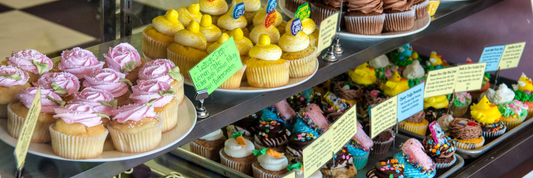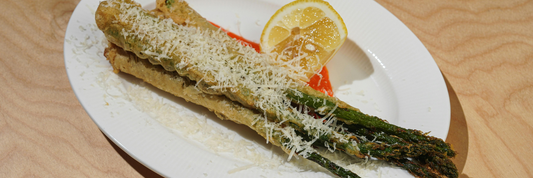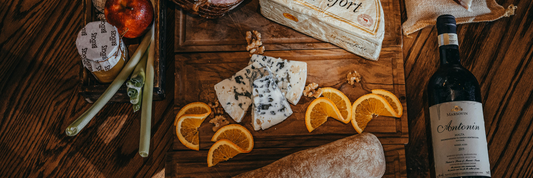The global food industry is under increasing pressure to reduce plastic waste and embrace sustainable packaging solutions. Among the many eco-friendly materials available today, wood has emerged as a promising plastic alternative in the food industry. With its natural durability, biodegradability, and renewable sourcing, wood-based food packaging is not just an environmentally friendly option but also a practical solution for businesses aiming to meet sustainability goals.
-
Fiber Packaging: A Guide for Eco-Conscious Consumers and Businesses
-
Wooden Cutlery for Sustainable Brand: Why It's the Best Choice
-
Different Types of Packaging and Their Uses – Best Packaging Solutions for Your Business
Why the Food Industry Needs Plastic Alternatives

The Environmental Impact of Plastic Packaging
Plastic has long dominated food packaging due to its low cost and versatility. However, it contributes significantly to global pollution, landfill overflow, and microplastic contamination in oceans and soil.
Regulatory and Consumer Pressure on Plastics
Governments worldwide are implementing bans and taxes on single-use plastics. Meanwhile, eco-conscious consumers are increasingly demanding sustainable packaging options from restaurants, cafés, and food manufacturers. This growing demand makes wood packaging solutions a viable and future-proof alternative.
Advantages of Wood as a Plastic Alternative

Biodegradable and Compostable Properties
Wood packaging naturally decomposes, unlike plastics that can take centuries to break down. This makes it a safer choice for the planet.
Renewable and Sustainable Material
Sourced from responsibly managed forests, wood is a renewable resource. Certifications such as FSC (Forest Stewardship Council) ensure that harvesting wood does not harm ecosystems.
Durability and Food Safety
Wooden containers and utensils are durable, heat-resistant, and free from harmful chemicals, making them safe for direct food contact.
Aesthetic and Branding Benefits
Wood has a premium, natural look that enhances food presentation, especially for eco-conscious brands aiming to position themselves as sustainable leaders.
Applications of Wood in the Food Industry

- Wooden Cutlery and Utensils: Forks, spoons, knives, and stirrers made of birch or bamboo.
- Wooden Food Trays and Plates: Popular in catering, takeaways, and eco-friendly restaurants.
- Wood-Based Packaging for Takeaway: Wooden boxes, cups, and clamshells for fast food and delivery.
- Wooden Coffee Stirrers and Straws: Replacing single-use plastic stirrers and straws.
- Wooden Food Storage Containers: Durable and reusable options for both retail and household use.
Challenges and Limitations of Wood Packaging
While wood as a plastic alternative offers many advantages, it also comes with challenges such as higher production costs, limited scalability, and the need for sustainable forestry practices. Additionally, certain food applications may require coatings to prevent leakage or moisture absorption.

Future of Wood as a Plastic Alternative in the Food Industry
The future of wood packaging is bright, driven by:
- Advances in technology to improve durability and functionality.
- Innovations in combining wood fibers with biodegradable coatings.
- Growing demand for eco-friendly packaging solutions across global markets.
Businesses that adopt wood-based packaging early will not only comply with environmental regulations but also strengthen their brand identity as sustainable leaders.
FAQs About Wood as a Plastic Alternative in the Food Industry
1. Why is wood considered a promising plastic alternative?
Because it is biodegradable, renewable, durable, and safe for food use, making it an ideal eco-friendly material.
2. Is wood packaging safe for food contact?
Yes. Wooden cutlery, trays, and containers are treated to meet food safety standards.
3. What are the disadvantages of using wood in food packaging?
Higher costs, limited scalability, and possible moisture absorption are some challenges compared to plastic.
4. Can wood packaging replace plastic entirely in the food industry?
Not entirely yet, but it can replace a large portion of single-use plastics in cutlery, trays, and takeaway containers.
5. How does wood compare to other eco-friendly alternatives like paper or bamboo?
Wood is sturdier and more durable than paper, while bamboo is technically a type of fast-growing wood. Each has unique advantages depending on the application.
Conclusion
Wood is undeniably a promising plastic alternative in the food industry. With its eco-friendly properties, natural durability, and consumer appeal, wood-based packaging has the potential to reshape how food businesses approach sustainability. As regulations tighten and consumer demand grows, adopting wood packaging today can help companies secure a competitive edge while contributing to a greener future.




